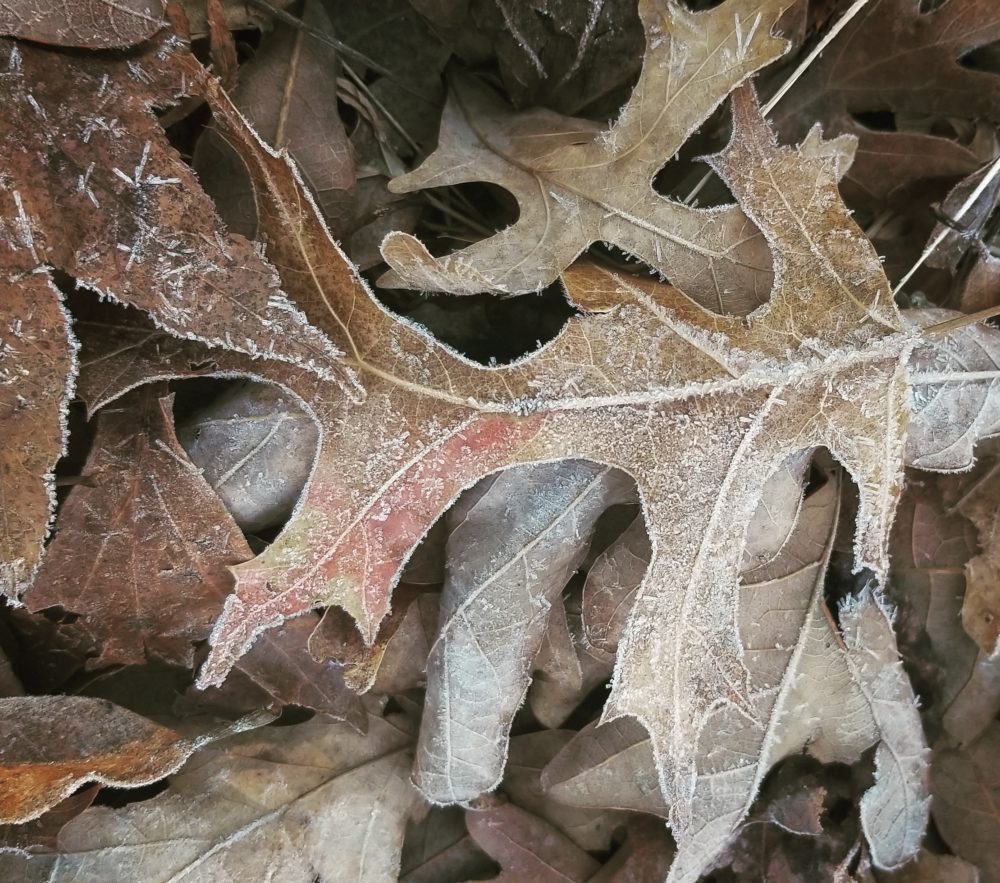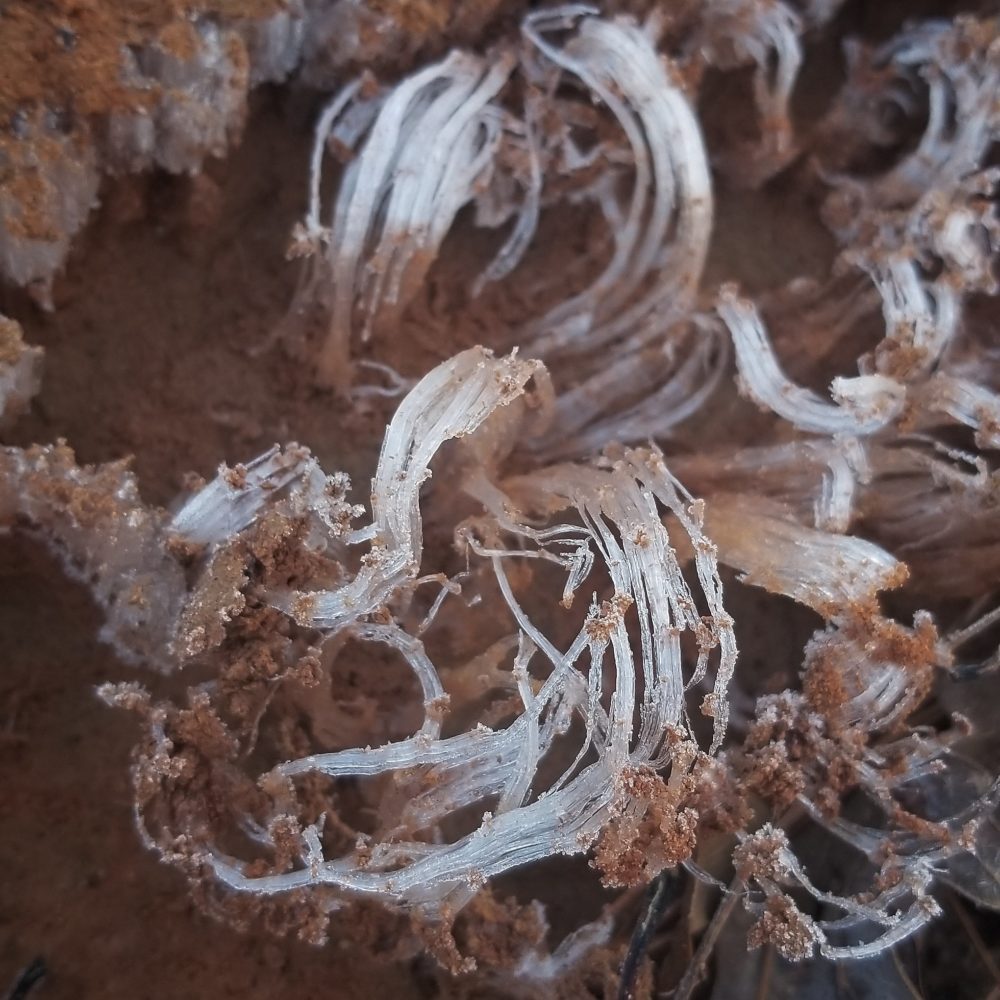Story & Photos by Tricia Kyzer
Chimophile: winter lover
from Greek ‘cheimonas’ for winter and ‘philos’ for love
Every year I tell myself, I am not a chimophile.
I cling to a childish apprehension of the cold, dark days. I hold on stubbornly to the warm colors of fall and soak up as much sunshine as I can, dragging my feet as winter creeps in. The seasons march forward with no regard to my fickleness and the once colorful landscape becomes defined by cool grays and browns and a subtle sparseness.
Every year, I have to refocus my lens when this darkness closes in, to adjust my aperture, to open my heart to the beauty that lives in this quiet, calm space we call winter.

A few winter wanders will usually wear down my resistance and remind me what I do love about this season.
This morning as I wander, the sun catches last summer’s leaves, once vibrant green and fluttering from branches, now laying on the forest floor in a soft brown carpet, frosted and sparkling. The trailsides are crunchy with emerging ice needles and fragile ribbons of ice like hand spun taffy waiting to be packaged up neatly.

Last season’s blackberry leaves are laced with finely woven ice crystals. There are a few bravely sugared mushrooms, their mycelium tucked deep in a blanket of soil, probably lured out into the cold by a warm spell. Tiny ruby crowned and golden crowned kinglets in the pines above me, busy with their winter dance, are managing to stay warm. A small winter wren shyly hops out from behind a log near the trail into a spot of sunshine and then seeing me, flutters back into its hiding place.
The forest’s winter canopy becomes sky instead of leaves, opening incredible windows to my surroundings.

Winter wanders offer unique opportunities to see what summer has kept hidden under a veil of leaves. The lay of land is exposed and the forest floor soaks up the direct light of the sun.
I look down and find evidence of those who embrace these frosty winter mornings and the open skies. Many of our forest floor orchids are still green and look quite happy. Cranefly orchids, downy rattlesnake orchids, puttyroot orchids all endure the icy air to gather the light that will provide for their summer blooms.

Like us, they will dress a little differently for the weather. Their leaves are thicker and therefore more resilient on freezing mornings.
Spotted wintergreen, or pipsissewa as some know it, actually bears the scientific name, chimaphila maculata, pointing to its hardiness in spite of winter. Chimaphila wears winter frosts gracefully and inspires me to also embrace this season.

This summer, when the trees are a thick canopy and the air is as sultry as I like it, the beautiful snow white flowers will remind me of these cold, quiet winter days and maybe even leave me with a little nostalgia for them.

______________________________________
Did you enjoy this Wild TR post?
Read more of Tricia’s nature writings:
For more winter wanderings, see our post about chasing winter waterfalls.




